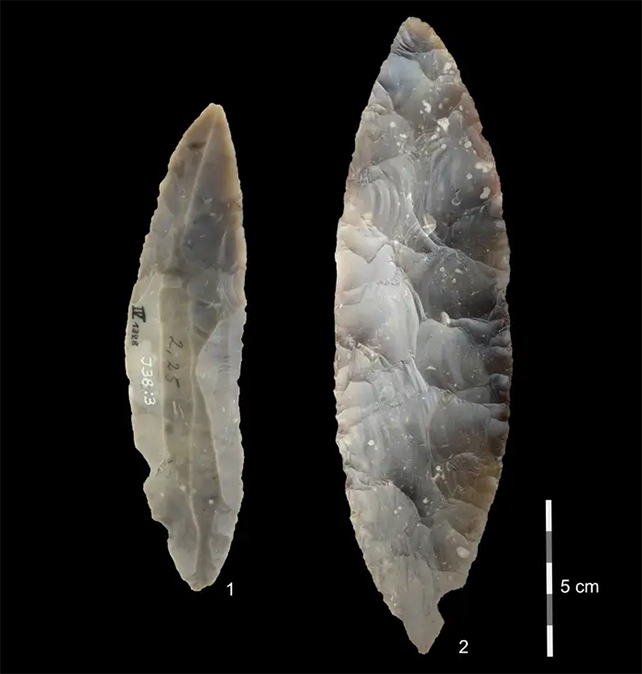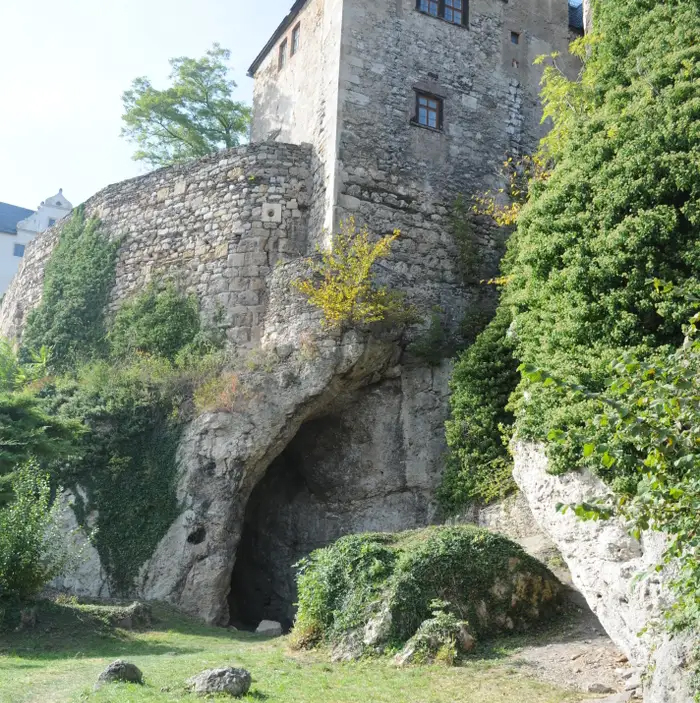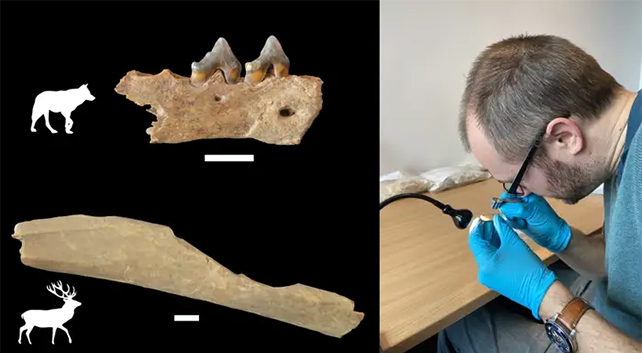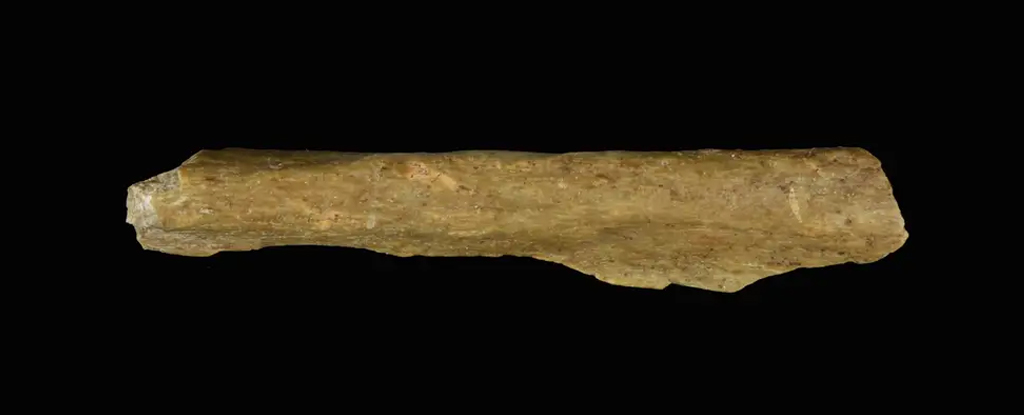Products You May Like
Researchers on the hunt to settle a long-standing debate ended up rewriting the timeline of ancient human history in the process.
For years, archaeologists have argued over an ancient culture with the unwieldy title: the Lincombian-Ranisian-Jerzmanowician technocomplex. Even scientists know that’s a mouthful, so they call it the LRJ for short.
The LRJ is characterized by the creation of specific blades and leaf points, which share aspects of both Neanderthal and Homo sapien craftsmanship.

The debate is over who made them, and the answer could help offer clues as to what happened about 45,000 years ago – when Neanderthals, one of our closest human relatives, mysteriously went extinct across Europe while Homo sapiens, ultimately, thrived.
“The usual wisdom was to consider that they were made most likely by late Neanderthals,” said study co-author Jean-Jacques Hublin, a professor of paleoanthropology at the College of France.
But Hublin and his colleagues wanted to settle the debate once and for all.
This led them to Ilsenhöhle cave in Ranis, Germany, one of several sites across Northwestern Europe where LRJ artifacts have been found.

Besides solving the mystery they sought, the researchers wound up discovering so much more.
Mining ancient DNA
When they excavated the cave, the researchers uncovered more than just LRJ artifacts – they came upon tiny bone fragments, too.
Most of the bones were too small to identify what animal they came from based on looks, alone.
But thanks to a revelatory new analysis called zooarchaeology by mass spectrometry, or ZooMS, the researchers were able to determine that 13 of the roughly 2,000 bone fragments they analyzed belonged to early humans.
The next step was determining which species of ancient human they were from. If the team could figure that out, then it would likely point them to who made the LRJ artifacts in the cave, thus solving the mystery, Hublin said.
To that end, they extracted DNA, which confirmed the bones belong to Homo sapiens, providing strong evidence that they were responsible for the LRJ artifacts. “Voila!” Hublin said triumphantly.
But they weren’t done, yet.
The team also used radiocarbon dating to date the bones, and were surprised by what they discovered.
According to their data, Homo sapiens were present in Ranis 47,500 years ago – thousands of years earlier than previously thought.
Unlikely neighbors
Until this discovery, archaeologists believed Homo sapiens did not arrive in Western Europe until 42,000 years ago, contributing to the extinction of Neanderthals.
A growing library of evidence has been pushing this timeline back more and more. Hublin and the team’s discoveries are the latest series of studies adding to the mounting pile.
The research was published in three papers in the peer-reviewed journals Nature and Nature Ecology and Evolution and paints a very different picture of history.
It suggests there were small “pioneer” groups of Homo sapiens living in Europe with Neanderthals for thousands of years before the species went extinct.
Whether these two groups ever interacted during that time remains unclear.
“It’s not at all the picture we had years ago of this wave of Homo sapiens moving into Europe and replacing the Neanderthals,” said Hublin. “What we see now is that it was not a wave, it was several wavelets,”
Moreover, the research suggests these early Homo sapien “pioneers” were more hardcore than we’ve given them credit for.
Hardcore humans
Previous research asserted that Homo sapiens were only able to enter Europe during warmer time periods because they were adapted to the warm climate of Africa, where they originated from.
But the specimens and artifacts found at Ranis suggest they actually entered directly through the chilly Northwest, and that this region was much colder than previously thought.
Analysis of animal teeth collected at the site revealed the climate was 7 to 15 degrees Celsius colder than it is today, similar to that of northern Scandinavia or parts of Siberia, said Hublin.
Additionally, analysis of animal remains revealed that mammals adapted to extreme cold were present at Ranis, including wooly mammoths, reindeer, and wolverines.

Questions remain about how warm-weather-adapted Homo sapiens survived such a dramatic transition. But they likely made warm clothing out of furs from these animals, explains study co-author Geoff Smith, a zooarchaeologist at the University of Kent.
Rewriting prehistory
Together, these findings paint a picture of human prehistory that is very different from the one we had before. But there are still questions to be answered.
The researchers have no plans to excavate Ranis further, and the cave has been closed off for safety reasons. But they will continue to study the specimens and artifacts from this last dig to dive deeper into interactions between Homo sapiens and Neanderthals during this time.
“I think we have more to discover,” Hublin said. “What’s ahead of us is understanding what was going on among the late Neanderthals. To what extent have they been penetrated by these newcomers? What kind of interactions do they have with them? But I think it’s a great step to have resolved the LRJ story.”
This article was originally published by Business Insider.
More from Business Insider:
